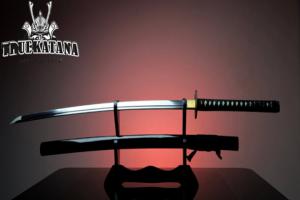1Win Bookmaker Review in Bangladesh
1Win has established itself as a renowned bookmaker in Bangladesh, offering users a plethora of betting options across various sports and casino games. Known for its reliable services and competitive odds, 1Win is a preferred choice for many betting enthusiasts. A detailed 1Win review highlights these features, showcasing why it stands out in the crowded betting market. ##
User Interface and Experience ##
1Win provides a user-friendly interface that simplifies the betting process for both novice and seasoned users. The platform is streamlined and easy to navigate, ensuring that users can quickly find and place bets on their desired events. The registration process is straightforward, which encourages new users to join without any hassle. ##
Range of Betting Options ##
One of the notable features of 1Win website is the extensive range of betting options available. Users can bet on a variety of sports including cricket, football, basketball, and even eSports. There are also numerous casino games, such as poker, blackjack, and slot machines, providing ample variety for users to enjoy. The wide range of betting options ensures that there is something for everyone, regardless of their betting preferences. ##
Security and Reliability ##
Security is a top priority for 1Win, making it a reliable option for users in Bangladesh. The platform employs state-of-the-art encryption technology to safeguard users' personal and financial information. For those questioning 1Win real or fake, the company's secure payment methods allow users to deposit and withdraw funds effortlessly, ensuring a smooth betting experience and reinforcing its credibility. ##
Promotions and Bonuses ##
1Win Bangladesh offers a range of promotions and bonuses that make betting more attractive. New users are greeted with a generous welcome bonus of 10,000 BDT, which can significantly enhance their initial betting experience. Furthermore, regular promotions and loyalty programs keep existing users engaged and provide ongoing value with additional bonuses up to 5,000 BDT. ##
Customer Support ##
1Win com excels in customer support, providing users with various channels to seek assistance. The platform offers 24/7 customer service through live chat, email, and phone, ensuring that users can get help whenever needed. The support team is known for its responsiveness and expertise, helping to resolve any issues promptly. ##
Mobile Compatibility ##
Recognizing the growing trend of mobile betting, 1Win offers a fully optimized mobile application. This allows users to make a 1Win bet on their favorite events and access all the features of the platform from their smartphones and tablets. The mobile app is designed to provide the same seamless experience as the desktop version, making it convenient for users who prefer betting on the go. ##
Sports Betting at 1Win in Bangladesh ##
Sports betting has long been an exciting way for fans to engage with their favorite sports. At 1Win BD, users are presented with a wealth of options to place bets on a variety of sports, making the experience more thrilling and rewarding. ##
Cricket Betting ##
Cricket is immensely popular in Bangladesh, and 1Win offers a comprehensive range of betting options for the sport. Users can place bets on major international tournaments such as the ICC World Cup, T20 World Cup, and various international series. Types of bets include match winners, top batsman, top bowler, total runs, over/under, and even the method of the first dismissal. These diverse betting options allow users to make strategic choices and enhance their betting experience. ##
Football Betting ##
Football draws a massive following worldwide, and 1Win caters to this with extensive betting markets. Users can bet on popular leagues such as the English Premier League, La Liga, Serie A, and international tournaments like the FIFA World Cup and UEFA Champions League. Betting options include match outcome (win, lose, draw), correct score, total goals, both teams to score, handicaps, and first goalscorer. This variety ensures that football enthusiasts can find numerous ways to engage with the sport. ##
Basketball Betting ##
For basketball fans, 1Win offers numerous betting opportunities on leagues and tournaments such as the NBA, EuroLeague, and FIBA World Cup. Users can place bets on the match winner, total points, point spread, player points, rebounds, and assists. These options allow bettors to delve into the statistical aspects of the game, making their betting experience both deep and engaging. ##
eSports Betting ##
eSports has been rapidly growing in popularity, and 1Win ensures that users can partake in this burgeoning field. Popular eSports like Dota 2, League of Legends, and Counter-Strike 2 are all available for betting. Users can bet on match winners, map winners, total kills, first blood, and overall tournament outcomes. This range of betting options caters to both casual viewers and dedicated eSports fans. ##
Horse Racing Betting ##
Horse racing enthusiasts will find a myriad of betting options at 1Win. Users can place bets on races from various international tracks, including the prestigious Derby and Grand National. Options include win/place/show, exacta, trifecta, and across the board. These betting types let users leverage their knowledge of the sport to place informed and strategic wagers. ##
Tennis Betting ##
Tennis betting at 1Win covers major tournaments such as Wimbledon, the US Open, the French Open, and the Australian Open. Users can bet on match winners, set winners, total games, handicaps, and specific point or game outcomes. The range of bets provides tennis fans with numerous ways to engage with every serve, rally, and match. ##
Casino Betting Overview ##
In addition to sports betting, the 1Win online platform offers an extensive online casino, providing users with an exciting range of gaming options. Casino betting allows users to experience the excitement of traditional casino games from the comfort of their own homes, with opportunities to win big through various types of bets. ##
Poker Betting ##
Poker is a staple of the casino experience at 1Win. Users can participate in various poker games such as Texas Hold’em and Omaha. Betting types include blinds, ante, call, raise, and all-in. The strategic nature of poker betting adds an extra layer of excitement, as users can leverage their skills and strategies to compete against others. ##
Blackjack Betting ##
Blackjack is another popular casino game offered by the 1Win casino section. Here, users can place bets on the primary game, trying to reach a total of 21 without busting. Bets include the main wager, insurance, and double down. The simplicity and fast pace of blackjack make it a favorite among casino bettors. ##
Slot Machine Betting ##
1Win’s casino also boasts a wide range of slot machines. Users can place bets on various paylines, with options to wager a certain number of coins per line. Slot machines come with different themes, paylines, and jackpots, ensuring a diverse and entertaining betting experience. ##
Roulette Betting ##
Roulette at 1Win provides users with classic casino thrills. This 1Win game offers betting options that include placing chips on single numbers, groups of numbers, odd or even, red or black, and high or low numbers. The dynamic nature of roulette, coupled with the different betting strategies, ensures a captivating experience for users. ##
How to Place Your First Bet at 1Win in Bangladesh ##
Placing bets on 1Win’s platform in Bangladesh is a straightforward process designed to make online betting accessible and enjoyable. Whether you’re a seasoned bettor or a newcomer, following the right steps ensures a smooth and rewarding betting experience. This guide outlines how to get started with registration, making a deposit, and placing your first bet. ##
Registration process ##
Before placing any bets, users must create an account on 1Win. The registration process is simple and can be completed in just a few minutes. Here is how to get started: ##
1. Visit the 1Win Website: Navigate to the official 1Win website. ##
2. Click on the Sign-Up Button: Locate the sign-up button, found in the top right corner of the homepage. ##
3. Fill in the Registration Form: Provide the necessary details, including name, email address, and phone number. ##
4. Create a Username and Password: Choose a unique username and a strong password to secure your account. ##
5. Agree to the Terms and Conditions: Read the terms and conditions and indicate your agreement. ##
6. Complete Registration: Click the 'register' button to finalize the process. ##
Depositing Funds ##
After registration, users need to deposit funds into their newly created 1Win account. This step is crucial as it provides the bankroll necessary for placing bets. Here is how users can deposit funds:
1. Log In to Your Account: Simply enter your 1Win login details to access your account and start enjoying the betting options available. ##
2. Navigate to the Deposit Section: Find the deposit section, accessible from the account dashboard. ##
3. Choose a Payment Method: Select from various payment options such as credit/debit cards, e-wallets, and bank transfers. ##
4. Enter Deposit Amount: Specify the amount you wish to deposit into your account. ##
5. Provide Payment Details: Enter the required payment details accurately. ##
6. Confirm the Transaction: Double-check the details and confirm the transaction to deposit the funds. ##
Placing Your First Bet ##
Now that the account is set up and funded, users can proceed to place their first bet on 1Win. It is important to select a sport or game that you are familiar with to maximize your chances of success. Follow these steps to place the first bet: ##
1. Explore Betting Markets: Browse through the extensive betting markets available, including cricket, football, basketball, and more.
2. Select a Sport/Event: Pick a sport or event you want to bet on. ##
3. Choose a Betting Type: Decide on the type of bet you wish to place (e.g., match winner, total runs, etc.). ##
4. Enter the Bet Amount: Specify how much money you want to wager on this bet. ##
5. Review Bet Details: Ensure all details are correct before proceeding. ##
6. Confirm Your Bet: Click on the 'place bet' button to finalize your bet. ##
By following these steps, users can easily navigate through the initiation process on 1Win in Bangladesh and enjoy a seamless and engaging betting experience. ##
Stay tuned.
 Art
Art






